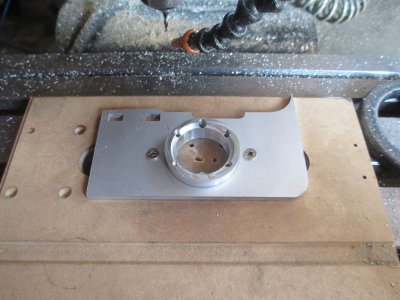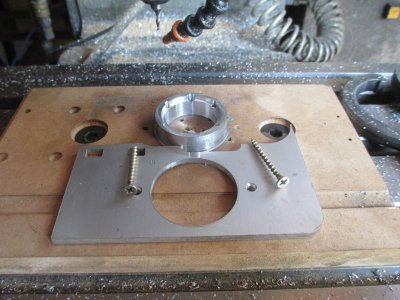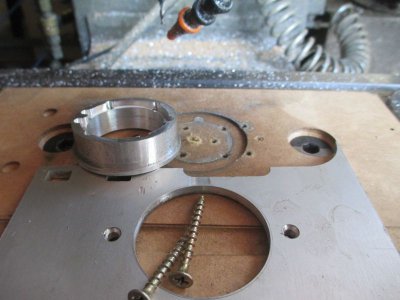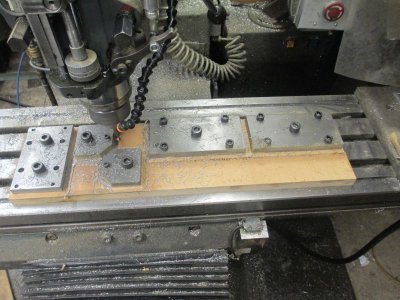- Joined
- Feb 8, 2014
- Messages
- 11,176
After machining a part, I realized that it would not work as designed. I found I needed to take 0.250 off of the height, and I had already machined off the holding tab that I used to hold it do the original machining. So I needed a quick and dirty method to hold the part while making modifications. Here is what I came up with.
First I bolted a piece of MDF to the table, then machined a pocket to fit the base of the part. MDF is a great base for many machining operations. There is a 0.093 flange at the base so I machined the pocket in the MDF 0.080 deep so the flange would sit a bit proud. Then I screwed a scrap piece of aluminum down, and machined a hole to fit the body of the part. The pocket in the MDF insures that when the clamp plate is removed that the part remains on center. That way I only have to set the 0 one time. The 0 is set on the center of the T-slot so the deck screws could penetrate the entire thickness of the MDF, and not hit the table.



First I bolted a piece of MDF to the table, then machined a pocket to fit the base of the part. MDF is a great base for many machining operations. There is a 0.093 flange at the base so I machined the pocket in the MDF 0.080 deep so the flange would sit a bit proud. Then I screwed a scrap piece of aluminum down, and machined a hole to fit the body of the part. The pocket in the MDF insures that when the clamp plate is removed that the part remains on center. That way I only have to set the 0 one time. The 0 is set on the center of the T-slot so the deck screws could penetrate the entire thickness of the MDF, and not hit the table.




